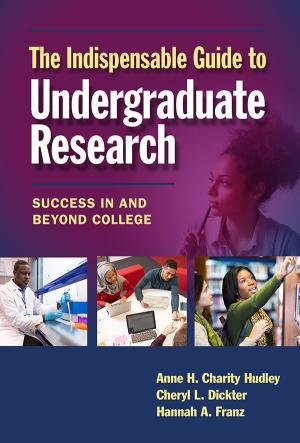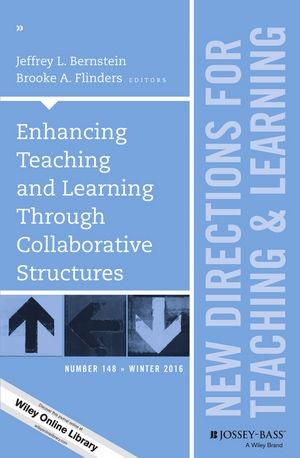Resources by Allison L. Gray

This brief handbook and reference work was designed for college and university students interested in doing research. Charity Hudley, Dickter, and Franz present scholarly research as an exciting way for undergraduates to make the transition from students who learn to scholars who join an ongoing conversation as “masters of knowledge and challengers of the status quo” (5). The authors purposely construct the guide to serve not only as a resource but also as a model of a research-based approach to scholarly writing; they frequently comment on their own working methods and the research process that went into the composition of this text. The resulting book effectively demystifies the world of academia and the work of scholars, making research approachable and appealing. Throughout the guide, the authors encourage students to pursue their academic and personal interests by becoming researchers, and they provide an impressively comprehensive roadmap for the research process. The book takes a special interest in guiding first-generation college students and students from historically underrepresented populations. The tone is collegial, and the text abounds with concrete advice about navigating the concomitants of scholarly research, from how to email a potential research mentor (80) to how to identify and access campus resources that can assist with time and energy management (49). Chapter 2, devoted to getting started, describes what research looks like across several academic disciplines and details ways different schools support and reward undergraduate research. Personal accounts from student scholars provide additional relatable voices and create the sense of a broad academic community into which readers are invited. The authors also emphasize the importance of sharing research results with a variety of audiences; Chapter 5, “Writing and Presenting Research” (91-116), describes different venues for written and oral communication that increase the impact of a student’s project, including conferences, articles, books, and social media. A particularly valuable contribution of this book is its focus on empowering students from underrepresented populations. In addition to devoting a chapter to describing challenges that students from minority populations face and some tools for overcoming those challenges (“Underrepresented Scholars in the Academy: Making a Way,” [117-142]), the authors consistently highlight the value of diverse voices and backgrounds, and especially of the new questions such diverse viewpoints can generate. They frame the importance of greater academic inclusiveness and equity in a larger conversation about the powerful impacts researchers can have on their communities, emphasizing the value of interdisciplinary scholarship and community-based research. Although the book is addressed directly to an audience of undergraduates who are or who seek to become researchers, the authors also model numerous ways to offer such students practical support. Therefore the text may also serve as a valuable resource for teachers, mentors, and advisors who assist student researchers and ensure their success.

This volume of collected articles provides snapshots of collaborative teaching and learning in action at US universities. While the authors describe a range of techniques and structures, there is an emphasis throughout on intentionally building and sustaining communities composed of teachers, learners, and even community partners. Richard A. Gale (“Learning in the Company of Others”) and Jeffrey L. Bernstein, et al. (“How Students, Collaborating as Peer Mentors…”) illustrate the positive effects of collaboration in college courses. Gale succinctly articulates numerous benefits of collaborative teaching, from increasing fruitful ambiguity that can inspire critical thinking, to providing teachers with opportunities for “the systematic investigation of student learning” (21). Bernstein’s experience working with students as peer mentors shows that a collaborative approach to class leadership can embolden students to take risks with low stakes, improving their participation in brainstorming and creative activities. The majority of authors convincingly demonstrate that collaborative learning offers students benefits far beyond the immediate course or program experience. Ellen G. Galantucci and Erin Marie-Sergison Krcatovich (“Exploring Academia”) emphasize that their experience as undergraduate collaborative learners helped them prepare for their later work in graduate school and as educators. These authors note that the mentoring they received contributed to their professionalization and enabled them to discuss pedagogy confidently on the academic job market. Multiple articles address the potential for fruitful collaboration with community partners beyond the university. “Collaborative Structures in a Graduate Program,” by Robyn Otty and Lauren Milton, describes a multi-year Centralized Service Learning Model (CSLM) that combined the work of two graduate courses and several community programs. In their article “The Development of a High-Impact Structure: Collaboration in a Service-Learning Program,” Brooke A. Flinders, et al. illustrate students’ internalization of high-impact learning outcomes, including “participation in meaningful work” (44). One important contribution of this text is the collection of students’ testimonies. A number of the authors asked course participants to complete some form of self-assessment. Overwhemingly, students who worked as peer mentors or group leaders reported gaining confidence, independence, critical thinking skills, and practical experience that could be used in the professional world. In Flinders, et al., “The Development of a High-Impact Structure,” young professionals in the nursing field provided feedback about ways their participation in the service-learning program helped them prepare for clinical work. This volume offers a wealth of suggestions for designing learning communities; Milton D. Cox’s contribution (“Four Positions of Leadership…”) identifies traits that administrators and facilitators have found to be essential when organizing faculty learning communities. Each article clearly explains its authors’ methodology, making this a helpful resource for teachers who are looking for direction in implementing collaborative learning strategies. While it might have been helpful in some cases to learn more about how community partners assessed the contributions of university teams to their work, overwhelmingly the articles demonstrate that collaborative learning is beneficial for students and teachers. For those looking to build more collaboration into their courses, this set of articles provides inspiration and concrete guidelines